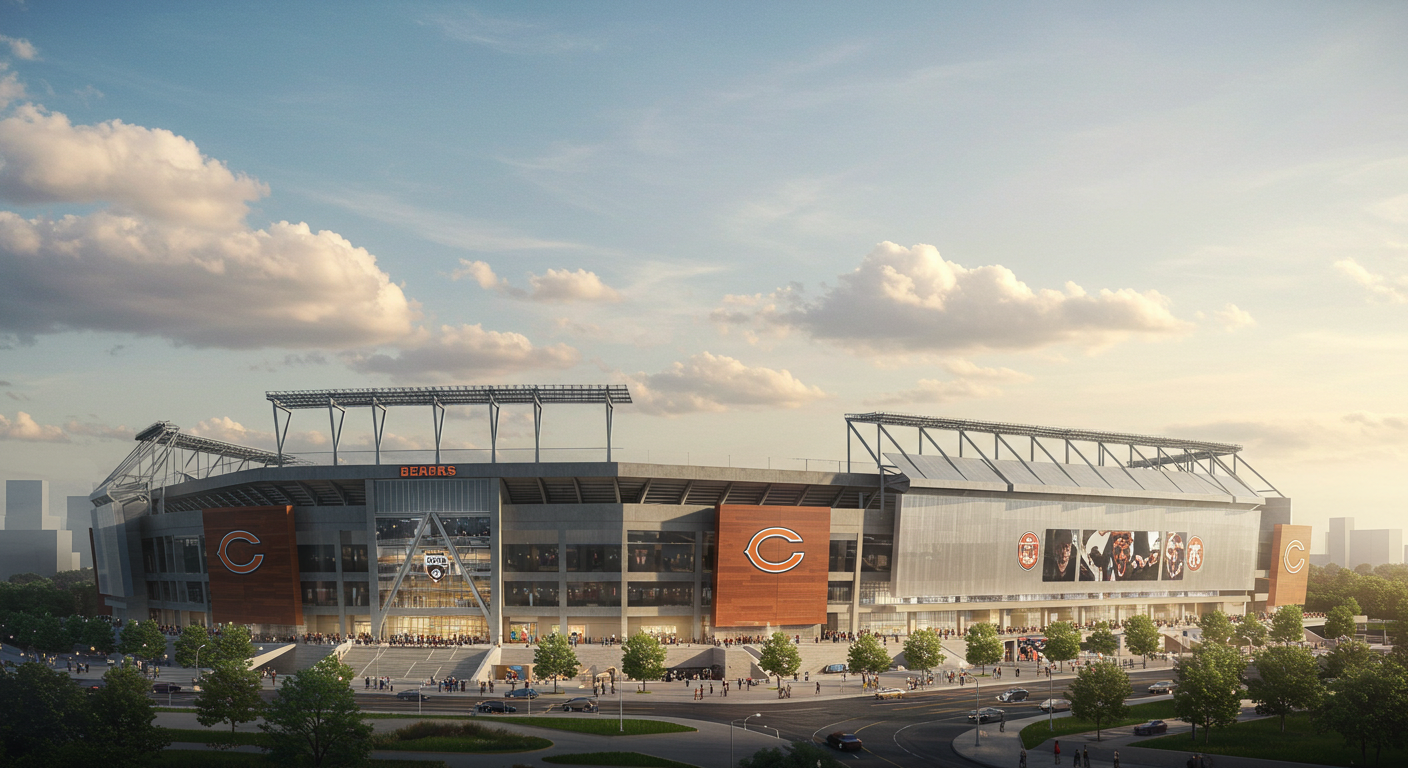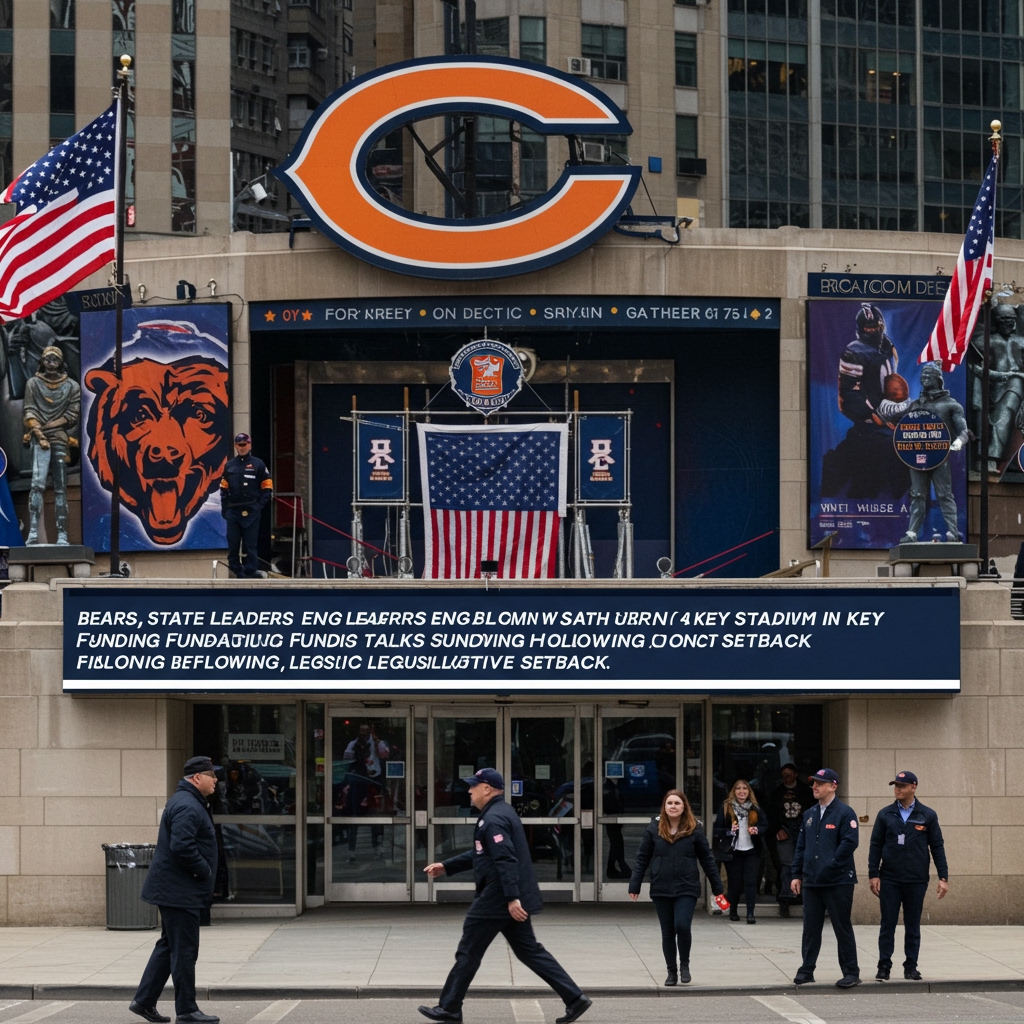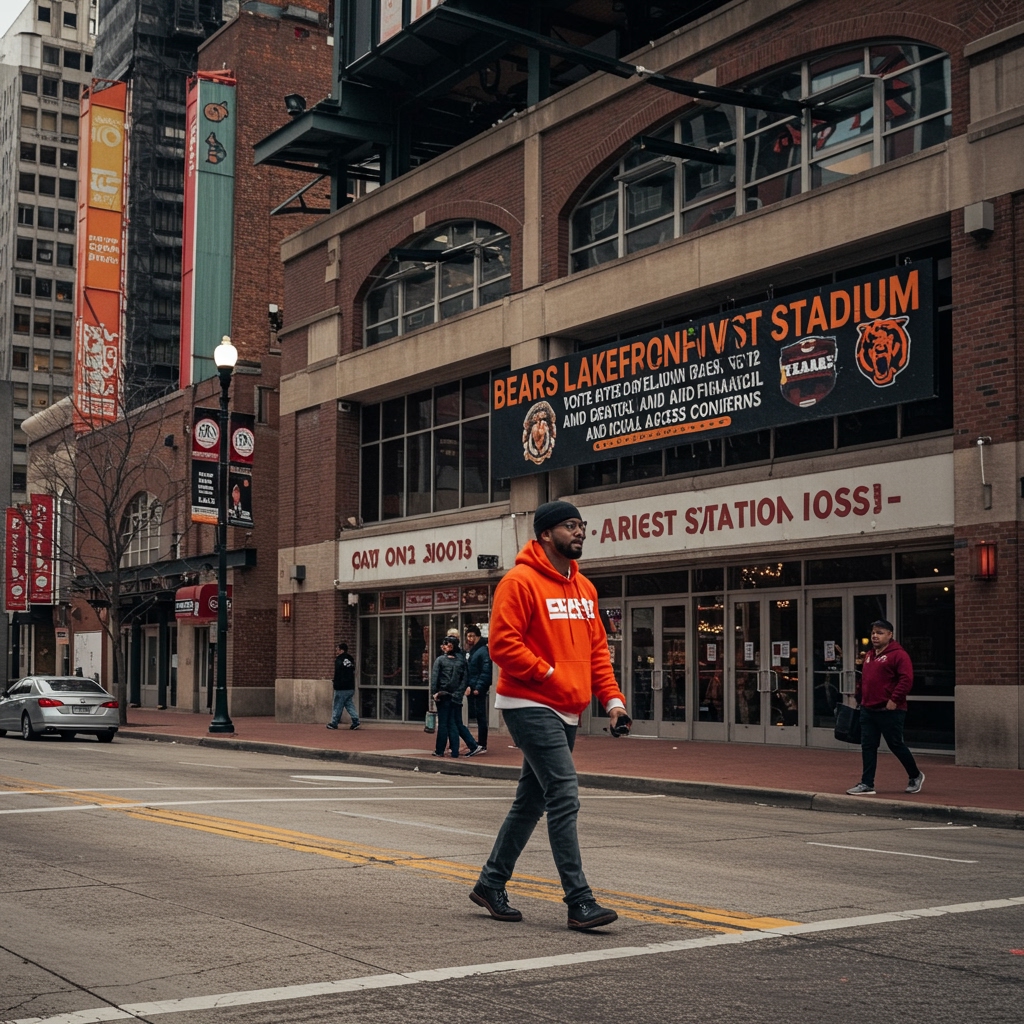In February 2023, the Chicago Bears embarked on an exciting new journey with the acquisition of land in Arlington Heights, aiming to establish a modern, enclosed stadium complete with an expansive entertainment and residential complex. However, just over a year later, on April 24, 2024, the team announced a bold pivot towards constructing a publicly owned domed stadium on the lakefront, presenting renderings that promise to transform the Chicago skyline and enhance the fan experience significantly.
Unveiling the Vision: A State-of-the-Art Lakefront Stadium
During a captivating presentation at Soldier Field, team President and CEO Kevin Warren unveiled the ambitious plans for a $3.2 billion stadium that would serve as a hub for major events beyond just football. “It’s time for us to do something special together,” Warren declared to a supportive audience. The proposed stadium, featuring a translucent roof and expansive glass walls offering stunning views of downtown Chicago, is designed to host a variety of events year-round, including concerts, soccer matches, college basketball playoffs, and potentially even the Super Bowl.
The new facility, envisioned to seat approximately 65,000 for football, with a standing room capacity of up to 70,000 and 77,000 for basketball, would replace Soldier Field, which has been the Bears’ home for over a century. Warren emphasized that the project aims to create an international attraction, one that would resonate for generations to come.
A Closer Look at the Plans: Features and Community Impact
The ambitious proposal includes several key features aimed at enhancing community engagement and ensuring the stadium serves as a multi-purpose venue:
– A modern enclosed stadium just south of Soldier Field, currently a parking lot.
– Year-round functionality, allowing for diverse events beyond football.
– Preservation of Soldier Field’s iconic colonnades, offering a nod to Chicago’s rich history.
– Addition of 14 acres of athletic fields and open spaces for local sports teams, graduations, and community events.
If the proposal receives approval, the Bears anticipate that the new stadium could open its doors by 2028, marking a significant milestone in the franchise’s history and the city’s development.
Funding the Vision: The Financial Landscape
The anticipated cost for the new stadium is a staggering $3.2 billion, with funding sources outlined as follows:
– The Bears have pledged to cover approximately $2 billion through private investment.
– An additional $300 million is being sought from the NFL.
– The remaining $900 million is expected to come from state funds.
Moreover, an estimated $325 million would be required for infrastructure improvements, which include enhanced road access and utilities, potentially raising the total investment to $1.5 billion once additional amenities, such as a hotel, are factored in.
The public funding component is proposed to be financed through bonds issued by the Illinois Sports Facilities Authority (ISFA), which has a history of supporting major sports venues in the region. These bonds would be repaid over 40 years using revenue generated from a 2% hotel tax in the city.
Despite the ambitious nature of the proposal, some political leaders, including Governor J.B. Pritzker, have expressed skepticism. “I remain skeptical about this proposal, and I wonder whether it’s a good deal for the taxpayers,” he remarked, highlighting the need for careful consideration of competing state priorities.
Community Reactions and Concerns
The response from the community and various advocacy groups has been mixed. Friends of the Parks, an organization dedicated to protecting Chicago’s lakefront, has criticized the stadium plan as rushed and lacking transparency. They raised concerns about the impact on public land and questioned whether the project aligns with the city’s long-term interests. “Chicago has a long history of closed-door planning and rushed decision-making that does not end well for taxpayers,” the group stated, drawing parallels to other faltering mega-developments.
Arlington Heights: The Future of the Bears’ Original Plans
As the Bears pivot towards a lakefront stadium, questions arise regarding the future of their Arlington Heights property. The village board had previously approved an agreement outlining the property taxes for the site, set at $3.6 million annually. However, with the new focus on the lakefront, the fate of this site remains uncertain, leaving many to wonder how it will factor into the Bears’ long-term strategy.
Looking Beyond Chicago: Potential Alternatives
Interestingly, the Bears’ stadium discussions have sparked interest beyond Chicago. Recent legislative moves in Indiana have introduced the possibility of attracting the Bears—or another professional franchise—to Northwest Indiana. A bill aimed at establishing a professional sports development commission has been introduced, with hopes of drawing attention to the region as a potential new home for the team. “The Bears are the big boy, so that has received the most attention,” stated State Rep. Earl Harris, emphasizing the interest in bringing major sports to Indiana.
The Road Ahead: What’s Next for the Bears and Chicago
As the Bears continue to pursue their vision for a domed stadium on the lakefront, the coming months will be critical in determining the feasibility of their plans. Engaging with community stakeholders, addressing funding concerns, and navigating political challenges will all play vital roles in shaping the future of this ambitious project.
In conclusion, the Chicago Bears’ proposal for a new domed stadium represents not just a significant investment in sports infrastructure but also an opportunity to redefine the city’s landscape and cultural offerings. While challenges remain, the excitement surrounding the project underscores a collective desire for innovation and progress. Whether this vision becomes reality will depend on the team’s ability to navigate the complex web of community interests, financial considerations, and political dynamics that lie ahead.













